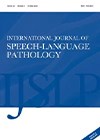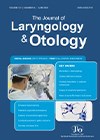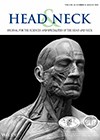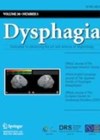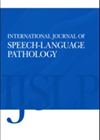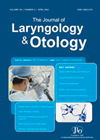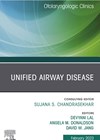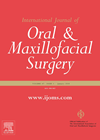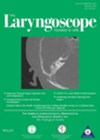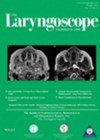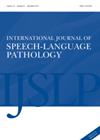
Journal Reviews
How much does it cost to simulate speech and language therapy placements?
The Royal College of Speech and Language Therapists report that 20% of speech and language therapy positions are unfilled in the UK. Consequently, there is an urgent need to offer as many training courses as possible to fill these gaps....
Infection and other factors influencing post-tonsillectomy haemorrhage
In this detailed narrative review article, the authors have addressed several factors which could be related to postoperative bleeding after tonsillectomy. As regards to microbiology, the significance of micro-organisms present both on surface and within the tonsils is emphasised and...
How long after head and neck cancer diagnosis do patients need opioids?
With the advances in the management of head and neck cancer (HNC), patients tend to survive longer after their diagnosis. These people face the burden of chronic pain management which is strongly associated with HNC. A HNC team in Portland...
Does the appearance, texture, and flavour of food affect how we swallow?
Texture modification and the use of thickened fluids are well-known strategies used to facilitate swallowing in people with dysphagia. However, some controversy exists around thickeners and their possible negative impact on hydration and medication absorption. This paper considers other properties...
The nice therapist effect: does the therapeutic relationship matter?
Quality of relationships is considered a core component of all speech and language therapy work, yet there is little agreement of what constitutes a therapeutic relationship. This study describes a scoping review to map existing evidence that has investigated this...
Non-surgical and surgical management of arytenoids granuloma
Arytenoid granulomas are often a sequelae of laryngopharyngeal reflux (LPR). Unless there is suspicion of malignancy, they require a very balanced approach between conservative management and surgical intervention. The authors present a series of 62 patients with whom the primary...
How best can we manage Samter’s Triad/AERD?
The classic ‘Samter’s Triad’ of asthma, chronic rhinosinusitis with nasal polyposis (CRSwNP), and aspirin sensitivity is now referred to as aspirin-exacerbated respiratory disease (AERD) or non-steroidal anti-inflammatory-exacerbated respiratory disease. We often come across in our rhinology setting, patients with recalcitrant...
Relapse after bi-maxillary surgery in a class III malocclusion
This study analysed 90 patients who underwent a bi-maxillary osteotomy for a class III malocclusion. There were 30 in each of three groups of patients based upon the Frankfort mandibular plane angle (FMA). They were divided into: greater than 32°,...
Assessing the impact of e-cigarette smoke on the vocal fold
While the use of electronic-cigarettes (e-cigs) is increasing rapidly, little is known about the effects this has on the health of vocal fold. In this translational research study, authors compared the effects of e-cig vapour and cigarette smoke on an...
Postoperative bleeding rates after inferior turbinate reduction using three different techniques
The most serious complication of inferior turbinate reduction surgery is postoperative bleeding, soon after the operation or later on. In this study comprising 751 patients, the authors have compared three common methods. Partial turbinectomy involved resection of the inferior turbinate,...
Can diet alone be used to treat laryngopharyngeal reflux?
In this crossover observational study, a low-fat, low-quick-release sugar, high-protein, alkaline, and plant-based diet was investigated as a single treatment for laryngopharyngeal reflux (LPR). Authors recruited 50 participants with demonstrated LPR on hypopharyngeal-oesophageal multichannel intraluminal impedance-pH-monitoring (HEMII-pH), off acid suppressive...
Doing it for yourself: self-management in speech and language therapy
People with stroke aphasia are traditionally discharged from speech and language therapy when they have plateaued; meaning they are making no further progress in language recovery. This service model has been problematic, leading to people being discharged when they are...

